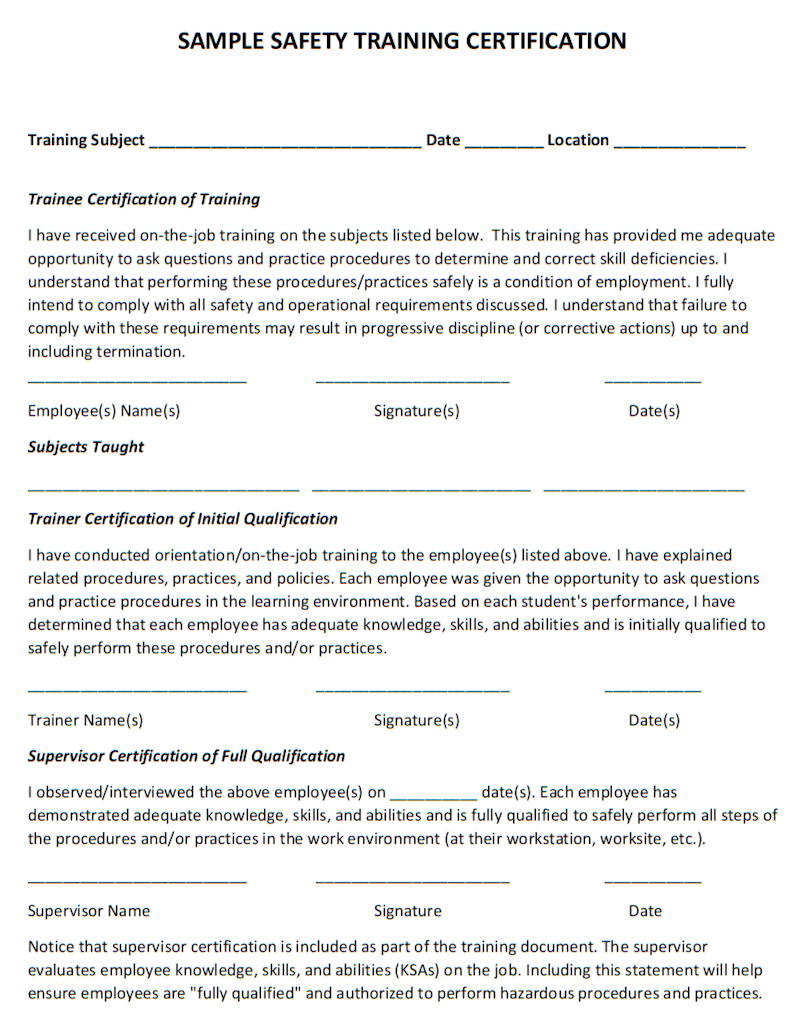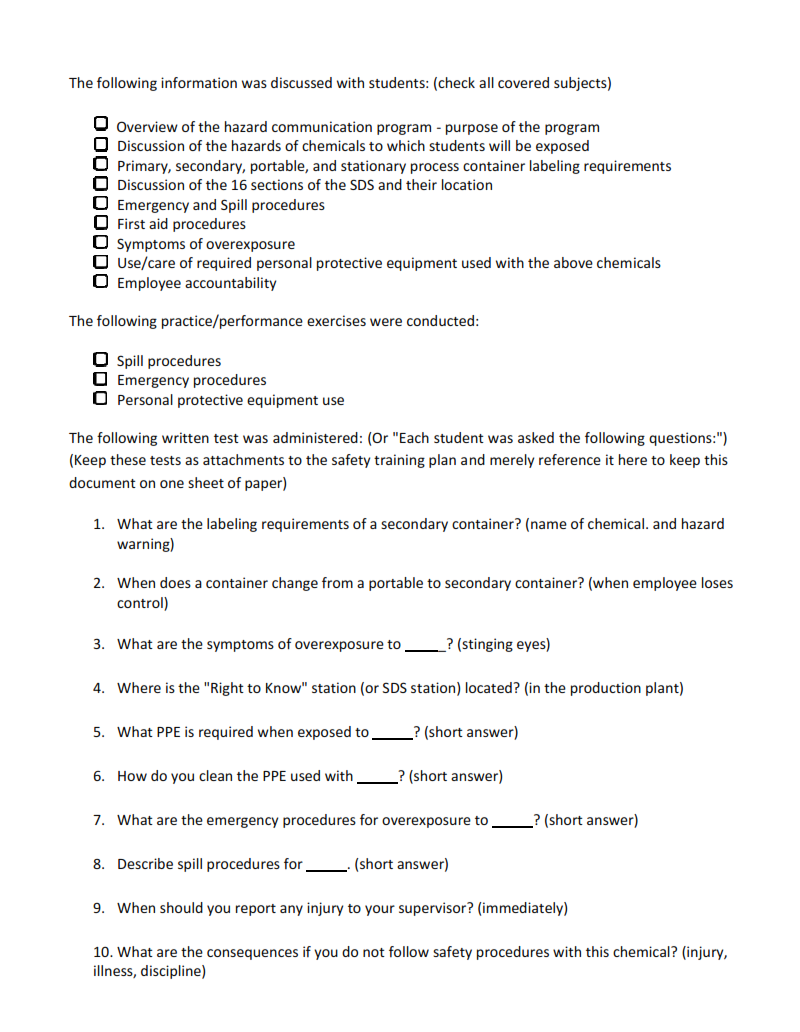Safe On-The-Job Training (OJT)
Step 5: Conclude
To conclude the training, answer any remaining questions and recognize each learner's good work.

The learner and trainer should accomplish:
- Recognize the student's accomplishment - "Good job!"
- Re-emphasize the importance of the procedure and how it fits into the overall process.
- Remind the employee about their responsibilities and accountability by discussing the natural (hurt/health) and system consequences (reprimand/reward).
Step 6: Validate
After learners finish the OJT, the trainer, or better yet, the supervisor, should observe them applying what they've learned in the actual work environment. Doing so validates the training and helps to legally protect both the employees and the employer.
Learners can also validate that they have adequate KSAs if they can effectively teach the trainer how to do the job. If they can't teach the job, the trainer should not certify them as qualified to do the job: it's time for some retraining.
Step 7: Document
The employer is ultimately responsible for certifying employes are competent in performing safety procedures and practices. The well-known OSHA adage, "if it isn't in writing, it didn't get done," is true about documenting safety training. For OJT training, documentation should be more than an attendance sheet.
To document the training, the learner certifies that:
- hands-on training was accomplished;
- questions were answered;
- opportunities were provided to do procedures;
- accountabilities are understood; and
- the intent to comply
The trainer and supervisor certifies the learner has:
- demonstrated adequate knowledge; and
- developed the skills to complete the procedures
- adequate abilities to perform procedures and practices in the workplace
Knowledge Check Choose the best answer for the question.
7-11. What should the trainer and supervisor certify to adequately document OJT training?
You forgot to answer the question!


